#cheyenne mountain zoo
Explore tagged Tumblr posts
Text


(03/26/24)
#i love these pics; this is plato and pandora afaik#moment of reflection#my pics#pelican#pink-backed pelican#bird#animal#bird photography#animal photography#zoo photography#cheyenne mountain zoo#bird therian#bird kin#pelican therian#pelican kin#pelikin? hehe#dreamcore#photographers on tumblr#original photographers
4 notes
·
View notes
Text

My absolute favorite wildlife photo ive ever taken. I unfortunately did not have my camera with me as this was a last minute zoo trip on a rainy day, but you can still get amazing photos with your camera phone if you know what you’re doing!
#female photographers#nikonphotography#savvysshots#colorado#giraffe#giraffephoto#conservation photography#cmz#cheyenne mountain zoo#wildlife#wild animals#wildlife photography#wildlife pictures
8 notes
·
View notes
Text



Got to see some toad friends at the zoo today.
3 notes
·
View notes
Text
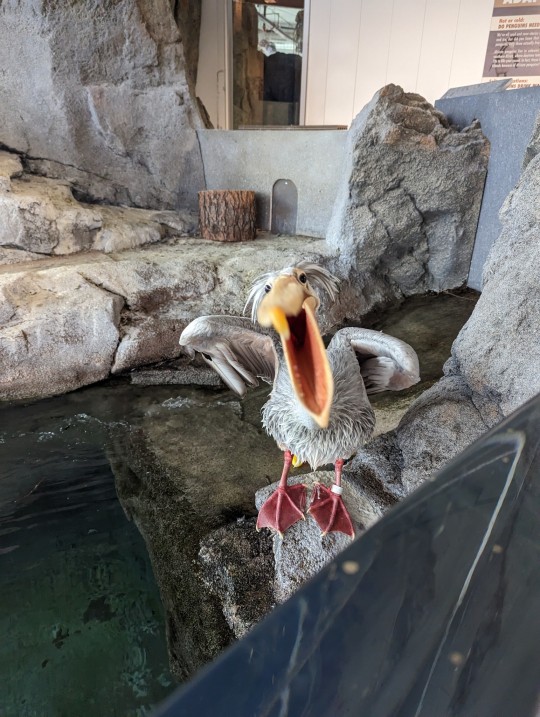
100% of you requested animals! So, here's a teaser picture for now while I pick and choose what pictures I want to put up here.
This is a picture of my husband took. The pelican was seconds away from snatching his phone. So, what does my husband do? He puts it as his Facebook profile photo. 😆
I have a number of more pictures!
So, enjoy your pelican!
17 notes
·
View notes
Video
Thinking: White-Cheeked Gibbon by Ginger Robinson Via Flickr: Cheyenne Mountain Zoo, Colorado Springs, Colorado
#Colorado#Summer#Cheyenne Mountain Zoo#Zoo#ZoosOfNorthAmerica#Monkey#Gibbon#Animal#AnimalPhotography#flickr
2 notes
·
View notes
Text

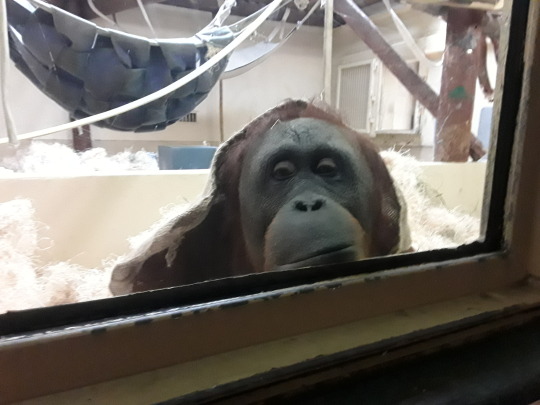
Oh gunny sack cloak, we're really in it now! We sat like this for a while and I showed her all the pictures I took. She approved these.
2 notes
·
View notes
Text
Discover Manitou Springs: A Weekend of Sights, Food, and Fun
Ready for an unforgettable escape? Check out our ultimate guide to a Manitou Springs weekend packed with breathtaking views, thrilling adventures, and must-try local eats!
A Manitou Springs weekend is the perfect way to soak in the crisp Colorado autumn air, stunning mountain scenery, and charming small-town vibes of the Colorado Springs area. With the breathtaking backdrop of the Rockies and aspens ablaze in golden hues, a long weekend in this delightful town offers an ideal escape for a girls’ trip. From historic landmarks and scenic train rides to delicious…
#80829#Cheyenne Mountain Zoo#Cliff House#Colorado#Garden of the Gods#Manitou Springs#Pikes Peak#Royal Gorge#waterfall
0 notes
Text
Re zoo post
Also the whole fucking thing is like a straight 90° slope it sucks
1 note
·
View note
Note
If you were to design a Perfect Day for Herschel that did not include any of his usual routine and you could guarantee that you had the resources (time, money, spoons, etc) to make it happen, what would you include in Herschel's Special Day?
I am taking him to doggy manners training so he can go to the Cheyenne Mountain Zoo's Dog Days (they let a few well-behaved dogs on leash into the zoo a few times in summer for animal enrichment). I think he's going to love it.
(Charlie cannot go to the zoo because he is both dog-aggressive and has way too high a prey drive he'd hop into the meerkat enclosure and gobble them right up)
201 notes
·
View notes
Text

(03/26/24)
#i have a huuuuuge backlog of pics i want to post here so im gonna try to get started working on that lol ^^;;#animal#my pics#snapshots#moment of reflection#giraffe#giraffes#animal photography#cheyenne mountain zoo
4 notes
·
View notes
Text
Over the last few years, I’ve begun to heavily encourage people to think of a zoo or aquarium or sanctuary being accredited as conveying important information about their ethos / operations / politics - but not as an inherent indicator of quality. Why? Because accrediting groups can be and are fallible. There are issues with all of the accrediting groups and programs, to varying degrees, and so they’re just a piece of information for a discerning zoo-goer to incorporate into their overall opinion. I just saw a news article go by with some data that proves my point.

First off, good for Houston, no commentary that follows is directed that them.
This isn’t the first time I’ve seen a headline like this - there was one a couple years ago, about Cheyenne Mountain Zoo in Colorado also getting a perfect inspection. But here’s what bugs me about it.
If you see/hear the phrase “Facility X has been accredited by Y organization, which holds the highest standards in the world for this type of facility”, it kind of implies that facility X meets all of those standards, doesn’t it? Not most of them, not the majority. When you hear that a zoological facility has gone through a rigorous process to earn an accreditation branded (by the accrediting org) as “the gold standard” in the industry… the general public is going to interpret that as saying these facilities are in compliance with every single rule or standard. And what these headlines tell us, alongside the commentary from AZA in the articles, is that it’s not only not true - it never has been true. Most AZA accredited facilities apparently don’t meet all the AZA standards when they’re inspected, and that’s both okay with them and normal enough to talk about without worrying about the optics.
Let’s start with the basic information in the Houston Chronicle article, which will have been provided to them by the zoo and the AZA.
“Since it's inception in 1974, the AZA has conducted more than 2,700 inspections and awarded only eight perfect evaluations throughout the process's 50-year history. Houston Zoo's final report is 26 pages long — and filled with A's and A-pluses."
Okay, so… doing that math, less than one percent of AZA accreditation inspections don’t meet all the standards at the time of inspection. But, wait, that’s not just what that says. That bit of information isn’t talk about AZA accredited facilities vs the ones that got denied accreditation: this is telling us that of facilities that earned AZA accreditation, basically none of them meet all the standards at the time. This isn’t talking about tabled accreditations or provisional ones where they come back and check that something improved. Given that math from earlier, this information means that most - if not all - AZA accredited facilities have repeatedly failed to meet all of the standards at one point in time … and have still been accredited anyway.
That tracks with what was said about Cheyenne Mountain Zoo, back in 2021 when they got their perfect accreditation.
“Cheyenne Mountain Zoo has earned an incredibly rare clean report of inspection and its seventh consecutive five-year accreditation from the Association of Zoos and Aquariums (AZA). In nearly 50 years of accreditations, CMZoo is only the fourth organization to earn a ‘clean’ report, which means there wasn’t a single major or minor concern reported”
Seven consecutive accreditation processes - and only one of them where they actually met all the standard at the time.
Here’s what the AZA CEO had to say about Houston’s accreditation achievement in that article, which reinforces my conclusion here:
"AZA president and CEO Dan Ashe says the multi-day inspection process, which occurs every five years, has been described as "comprehensive, exhausting and intimidating."
"We send a team of experts in who spend several days talking to employees, guests and the governing board. They look at animal care and husbandry. They look at the governance structure and finances. They look comprehensively at the organization," Ashe explains. "For a facility like Houston Zoo to have a completely clean accreditation and inspection is extremely rare. These inspectors are experts, it's hard to get to the point where they can't find something.""
Now, here’s the rub. We, as members of the public, will never have any idea which standards it is deemed okay for a given AZA facility to not meet. All of the zoological accrediting groups consider accreditation information proprietary - the only way we find out information about how a facility does during accreditation is if they choose to share it themselves.
On top of that, it’s complicated by the fact that last time I read them AZA had over 212 pages of accreditation standards and related guidance that facilities had to comply with. Now, AZA doesn’t accredit facilities if there are major deviations from their standards, or if there’s an issue on something important or highly contentious. So - based on my completely outsider but heavily researched perspective - this probably means that most zoos are in non-compliance with a couple of standards, but not more than a handful.
To make trying to figure this out even more fun, it is also important to know that AZA’s standards are performance standards: whether or not they’re “met” is based on a subjective assessment performed by the accreditation inspectors and the accreditation committee. This means that what qualifies as fulfilling the standards can and does vary between facilities, depending on who inspected them and the composition of the committee at the time.
So why do I care so much? Because when it comes to public trust, branding matters. AZA has gained a reputation as the most stringent accrediting group in the country - to the point that it can lobby legislators to write exceptions into state and federal laws just for its members - based on how they message about their accreditation program. How intensive it is, how much oversight it provides, what a high level of rigor the facilities are held to. That… doesn’t track with “well, actually, the vast majority of the zoos meet most of the standards most of the time.” People who support AZA - people who visit AZA accredited zoos specifically because of what it means about the quality of the facility - believe that accreditation means all the standards are being met!
To be clear: most AZA zoos do meet some pretty high standards. It’s likely that what are being let slide are pretty minor things. I expect it’s on stuff the facility can improve without too much hassle, and it might be that doing so is probably part of what’s required. There’s not enough information available to people outside the fold. But I will say, I don’t think any zoo is getting accredited despite AZA having knowledge of a serious problem.
Where I take issue with this whole situations is the ethics of the marketing and branding. AZA frames themselves as being the best-of-the-best, the gold standard, when it turns out that most of their accredited zoos aren’t totally in compliance, and they know and it’s fine. They seem to be approaching accreditation like a grade, where anything over a certain amount of compliance is acceptable. The public, though, is being fed a narrative that implies it’s a 99/100 pass/fail type of situation. That’s not super honest, imho, which shows up in how there’s zero transparency with the public about it - it goes unspoken and unacknowledged, except when it’s used for promotional gain.
And then, like, on top of the honesty in marketing part, it’s just… something that gets joked about, which really rubs me the wrong way. Like this statement from the media releases for the Cheyenne Mountain accreditation:
“Another of our ‘We Believe’ statements is, ‘We value laughter as good medicine,’” said Chastain. “To put this clean accreditation into perspective, when I asked Dan Ashe, AZA president and CEO, for his comments about how rare this is, he joked, ‘A completely clean inspection report is so unusual, and so unlikely, it brings one word to mind — bribery!’“
So, TL;DR, even AZA accreditation is designed so that their accredited zoos don’t have to - and mostly don’t - actually fully meet all the standards. I’d love to know more about what types of standards AZA is willing to let slide when they accredit a facility, but given the proprietary nature of that information, it’s pretty unlikely there will ever be more information available. AZA accreditation tells you what standards a zoo aspires to meet, what their approximate ethics are, and what political pool they play in. When it comes to the quality of a facility and their animal care, though, sporting an accreditation acronym is just a piece of the larger puzzle.
#AZA accreditation#zoo accreditation#zoo politics#my research#There’s a lot more nuance to how accreditation inspections work and how facilities with bigger issues are given changes to correct them#but that’s for another post#right now I��m just irked that it is so normative for AZA facilities to get accredited without clean inspections
488 notes
·
View notes
Text


Cheyenne Mountain Zoo, Christmas lights,and sky ride, a magical night!
8 notes
·
View notes
Text
My nieces got to feed and get up close to giraffes at a zoo! I'm so jealous, lol.
If you're curious, this is the Cheyenne Mountain Zoo in Colorado, and you can feed the giraffes lettuce!
10 notes
·
View notes
Text
Went back to the Cheyenne Mountain Zoo and finally saw the okapi!!!



Bonus: also saw the little hippo come out of the water to munch on some grass

8 notes
·
View notes
Text
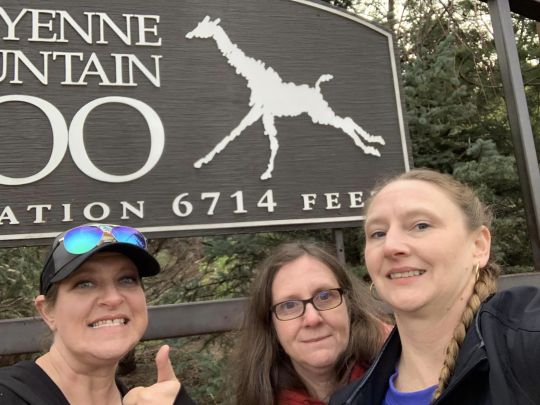
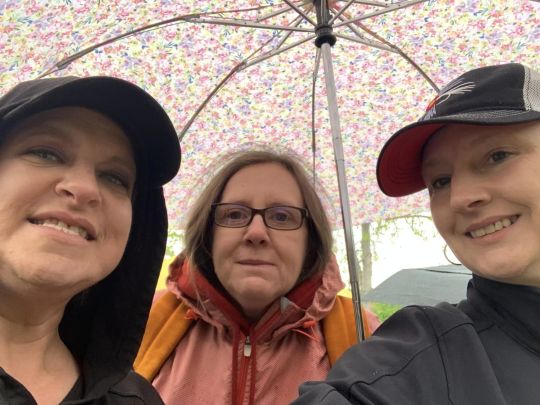
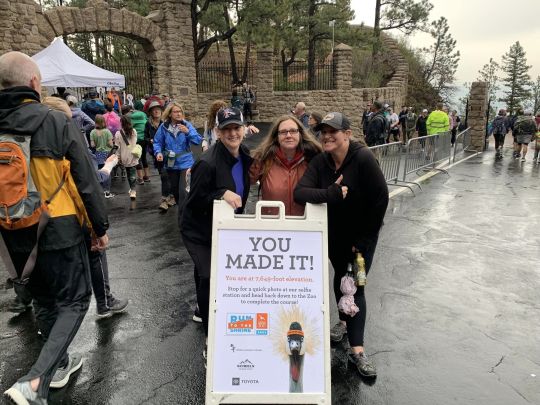
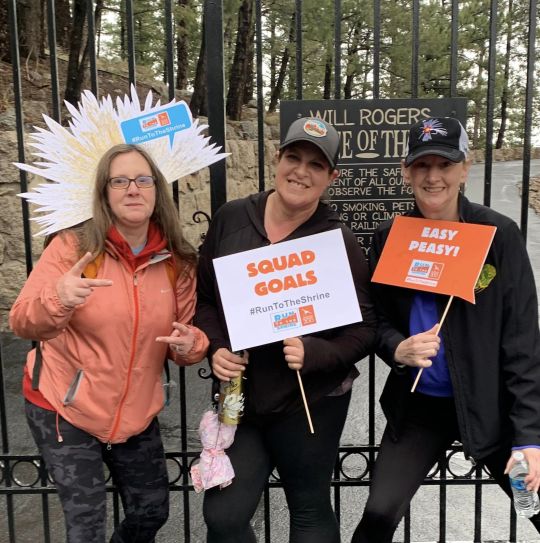
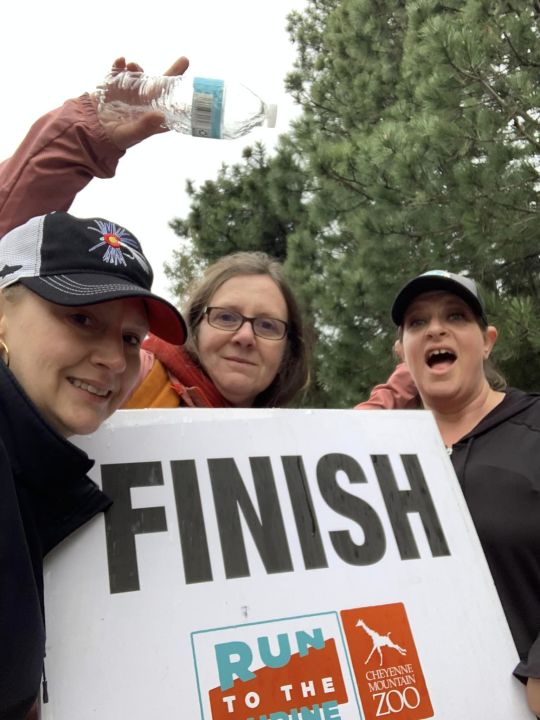
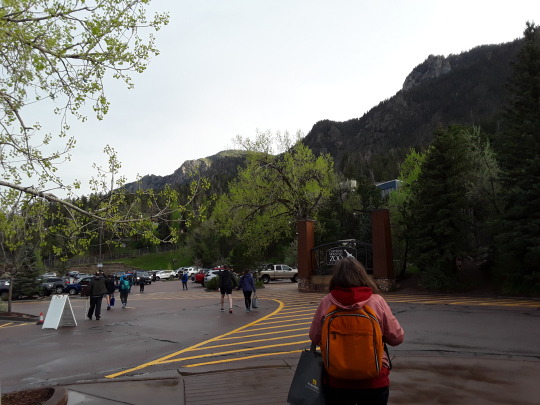



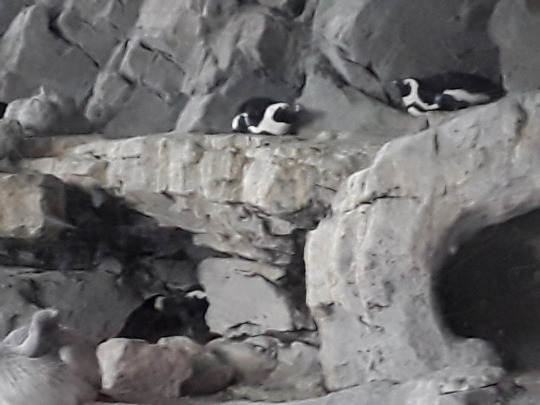

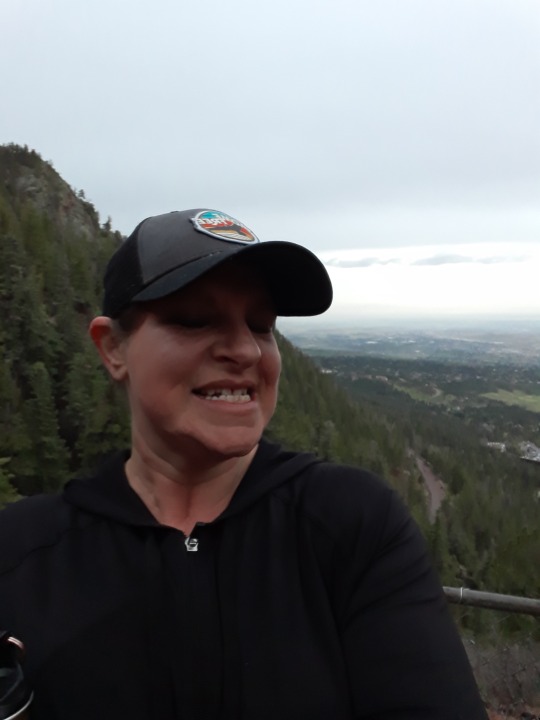
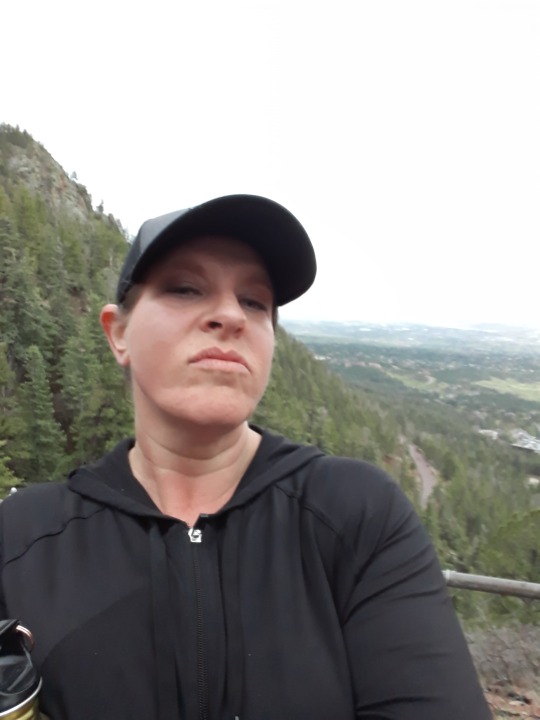

Did I just climb 934 feet up a mountain to the Will Roger's Shrine of the Sun in the rain to an elevation of 7,649 feet tonight? Yes I did. Did I think I would die at some points. Also yes.
#cheyenne mountain zoo#will rogers shrine of the sun#run to the shrine#ow i hurt#hurts so good#altitude#colorado girl
4 notes
·
View notes
Text
Colorado Trip
Recently just got back from my trip to Colorado, just like my Monterey trip, here are some photos I took ^^
Day 1 - Manitou & Cheyenne Mountain Zoo





Day 2 - Rampart Reservoir








(Yeah, this bear approached us, it was super close!! Luckily it was scared and ran away quickly. It got like 40-50ft from my aunt. Probably even closer to our picnic tables but I wasn't close to everyone else when the bear appeared.)



Day 3 - Cheyenne Mountain Zoo (again)
We got a membership to the zoo because they do monthly member nights; since my aunt has a membership, we decided to go too; it was nice to go at night to see the nocturnal animals. This 2nd trip was when the rest of our family could go








Day 4 - Denver Aquarium






I have to post the rest of the pictures in another post LMAO
#my photos#photography#colorado#vacation#trip#manitou#animals#flowers#wildlife#landscape#forest#aquarium#zoo#fish#shark#amphibian#newt#lizard
7 notes
·
View notes
